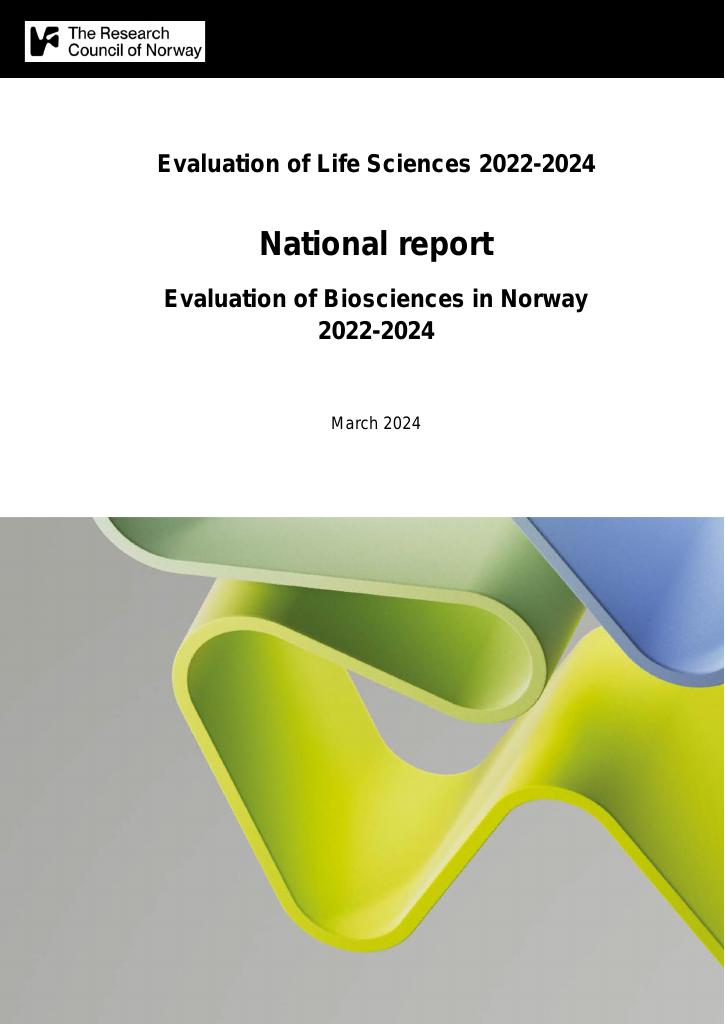Evaluering
Evaluation of Biosciences in Norway 2022-2024
Executive summary This is the report of the National Evaluation Committee, which was asked by the RCN to evaluate Bioscience research in Norway over the period 2011-2021 to identify and confirm the quality and the relevance of research performed at Norwegian Higher Education Institutions (HEIs) and across the Institute Sector. The report builds on the previous evaluations of 97 research groups and 22 administrative units in this research field, which were carried out in 2023 and documented in separate reports. Biosciences is an important research field for Norway. Biosciences includes fisheries, aquaculture and ecological research with a focus on understanding and monitoring nature and biodiversity as well as the consequences of human activities, including the effects of climate change. It further includes other, mainly biotechnological, research for food and non-food applications. The administrative units (these included Norwegian Institutes or components of such Institutes, as well as University Departments, Faculties, or Centres) were evaluated based on five criteria. These were Strategy, resources and organisation, Research production quality and integrity, Diversity and equality, Relevance to institutional and sectoral purposes, and Relevance to society. The evaluation of the administrative units built on the assessments of the 97 research groups. Norwegian research is generally considered good, with a few of the research groups evaluated as very good or excellent in an international comparison and a few rated below the bar. At the administrative unit level, there were examples of societal impact and cooperation between the HEIs and Institute Sector. The generous and constant core funding for the HEIs, the availability of excellent research infrastructure and long-term datasets in several critical areas (e.g. fisheries, seabirds) are considered strengths of Norwegian research. Weaknesses are the general lack of a strategic approach at all levels of the research system (which has led to a scattered research landscape), the low basic funding of the Institute Sector and the museums, the general low performance in (international) competitive research programmes, the low international visibility of Norwegian research, and the ageing population of the research staff. Although there are many publications with Norwegian co-authors outside their own organisation, and even more with international co-authors, there seems to be space for increasing the diversity of the international collaborators and for cooperation with internationally leading groups. There is no doubting the societal impact that Biosciences research in Norway has. Administrative units that support the regulation of major industries, such as wild fisheries and aquaculture, have a very direct societal impact, while other administrative units are providing a key Norwegian presence at international negotiations as well as providing the evidence base used by regulators and the national government. This is exemplified in many of the impact cases presented by the administrative units. That said, there is a tendency to use apparent drivers, e.g. the UN Sustainable Development Goals (SDGs), as hooks to justify the research without clearly showing how the research will help achieve delivery and thus societal change. In some respects, there was a disappointing lack of a sense of urgency associated with the climate and biodiversity crises, both of which will have a profound impact on Norway.
Publisert
Eier
Norges forskningsråd
Forfatter
Hilde Grindvik Nielsen
Språk
engelsk
Kilde
ISBN
9788212039940
